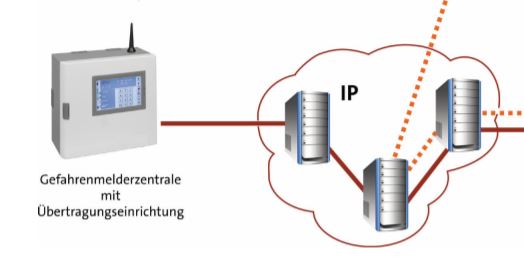Mobile radio transmission - what to watch out for
With the conversion of the telephone network to Next-Generation-Network (All-IP), a technical realignment became necessary. The BHE info paper "Changes in mobile radio transmission" illustrates the current VdS guidelines for alarm transmission.

For many years, two separate connection paths have been used to transmit alarm and fault messages from intrusion and fire alarm systems - the conventional telephone network as the first transmission path and the GSM mobile communications network as the second transmission path.
IP-enabled devices
With the conversion of the telephone network to Next-Generation-Network (All-IP) in 2018, a technical realignment became necessary, whereupon many transmission devices on the fixed network side were exchanged for IP-capable devices (cf. also here). The GSM network was still used as the mobile communications path.
In the future, however, there will also be innovations in mobile radio transmission that will make it necessary to rethink towards modern technologies, as the BHE Federal Association for Security Technology in Germany writes.
New Infopaper
The BHE info paper "Changes in mobile radio transmission" illustrates the current VdS guidelines for alarm transmission, according to which only IP-capable networks are now permitted, according to the security organization. It shows which data transmission methods are no longer future-proof and what needs to be taken into account when checking existing systems. Furthermore, the paper sheds light on possible weak points in data connections and, in this context, provides information about the BHE security network, which was developed exclusively for BHE member companies to reduce the risk of failures in the transmission of alarm and fault messages.
Interested parties can find the paper "Changes in mobile communications transmission" at. www.bhe.de/veraenderungen-mobilfunkuebertragung.










